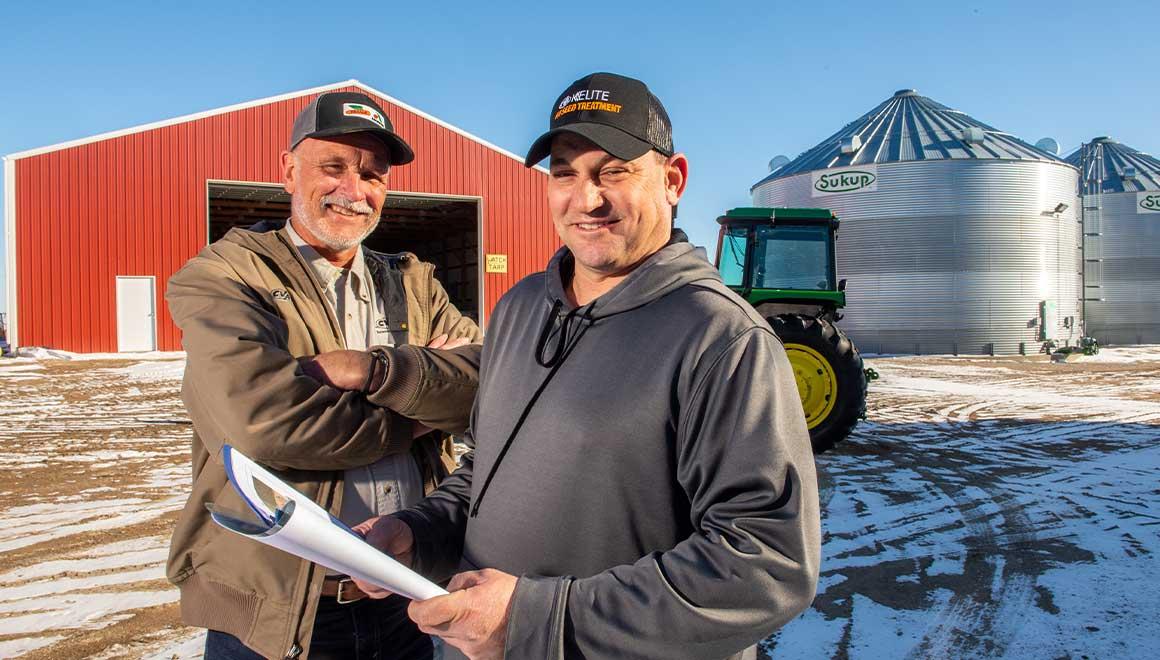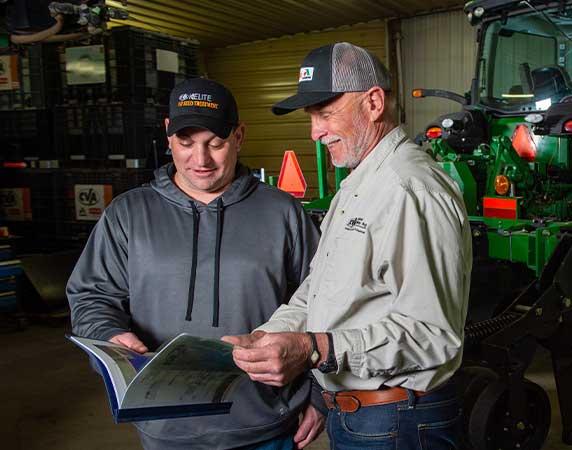No-tiller Pushes Corn Yields
Mar 21, 2023

Greg Keller, a fifth-generation corn, soybean and hog farmer from Monroe, Neb., has achieved corn yields greater than 300 bu/ac the last two seasons. He’s not finished, either. He and Randy Zmek, field sales agronomist with Central Valley Ag Co-op in Monroe, Neb., aim for nitrogen use efficiency of .9 lb. to 1 lb. of N per bushel and have hit it the last three years.
Soybean yields in 2021 and 2022 were 75 bu/ac to 80 bu/ac compared to average yields of 60 bu/ac to 65 bu/ac seven years ago. Dryland soybean yields ranged between 50 bu/ac to 60 bu/ac.
It’s worth noting these achievements come from ground that’s been under no-till for 21 years with no-till ripping started in 2007.
An early adopter of technology, Greg is advancing 4R nutrient stewardship principles that befit the 150-plus-year-old Keller Farm, much of it in rolling hills. He’s been planting twin row rye cover crop between 30” corn rows the past seven years. This improves the microbiome, reduces soil erosion and keeps topsoil in place. It also helps nutrient cycling for corn and soybean rotations. The breakdown of rye biomass complemented by multiple inputs allow the soil to hold and scavenge additional nutrients.
“We plant the rye in the fall,” Greg says. “It gets about an inch tall and we’ve seen it reach 3” tall before snowfall. We were extremely dry this year and we’ve seen about an inch to an inch and a half tall. It’ll take off again sometime in March when it warms up.
“We burn down the rye with Roundup, nitrogen, a pre-emergent and table sugar and let it slowly break down into the soil,” Greg says. By the end of July, there’s almost nothing left. That biomass is massive and breaks down into the soil very quickly. This is part of how we’re getting bigger yields.”
Long-term approach
Greg and Randy have worked together for 19 years and test three to four new products and practices each year. They grid soil sample every acre to understand test levels across field. These soil test results, plus yield monitoring data and site-specific crop nutrient removal rates generate nutrient recommendations for nutrients applied via multiple applications through pivot irrigation. Randy’s nutrient recommendations accounts for every nutrient source including cover crops, hog manure and remaining biomass.
Typically, there are four to six applications of nutrients from pre-plant to harvest that ensure every drop of water and fertilizer are used by the crop throughout the growth cycle. A no-till ripper is a key tool for water infiltration and rooting depth.
The Keller Farm team keeps a keen eye on erosion control and the results are getting noticed.
“During the last two years, Platte County had Dust Bowl-era-type dust clouds and a 7” rainfall event,” Greg says. “Both were catastrophic to neighboring farmers who lost a tremendous amount of topsoil. Some spots were over 6”. Our farm didn’t lose any topsoil. People want to learn how we’ve been able to adapt and mitigate using 4Rs and twin row cover crops.”
In addition to Randy, Greg is supported by his wife, Nikki and his son, Kole, who Greg says can run the combine and precision planter better than he can.
“We’re seeing the long-term effect of no-till and with the cover crop, yields continue to improve and 4R practices are proving their worth,” Greg says.
Additional 4R Practices
- Uses CVA Elite 3-way nitrogen stabilizer for liquid and dry fertilizers that includes urease inhibitors.
- Uses phosphate efficiency enhancement additives
- Grid soil sampling
- Variable-rate application of nutrients
- Account for nutrient credits for cover crops
- Use fertigation to apply nutrients to improve yields on all irrigated acres via split apply
- Use end-of-season 36” deep soil nitrate tests to identify nitrogen carryover levels
- Use end of harvest stalk nitrate tests to evaluate what plants take up
Photo credit to: Steve Woit photography
